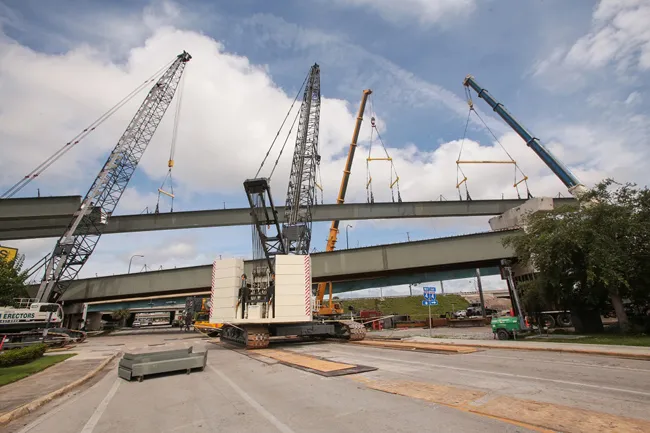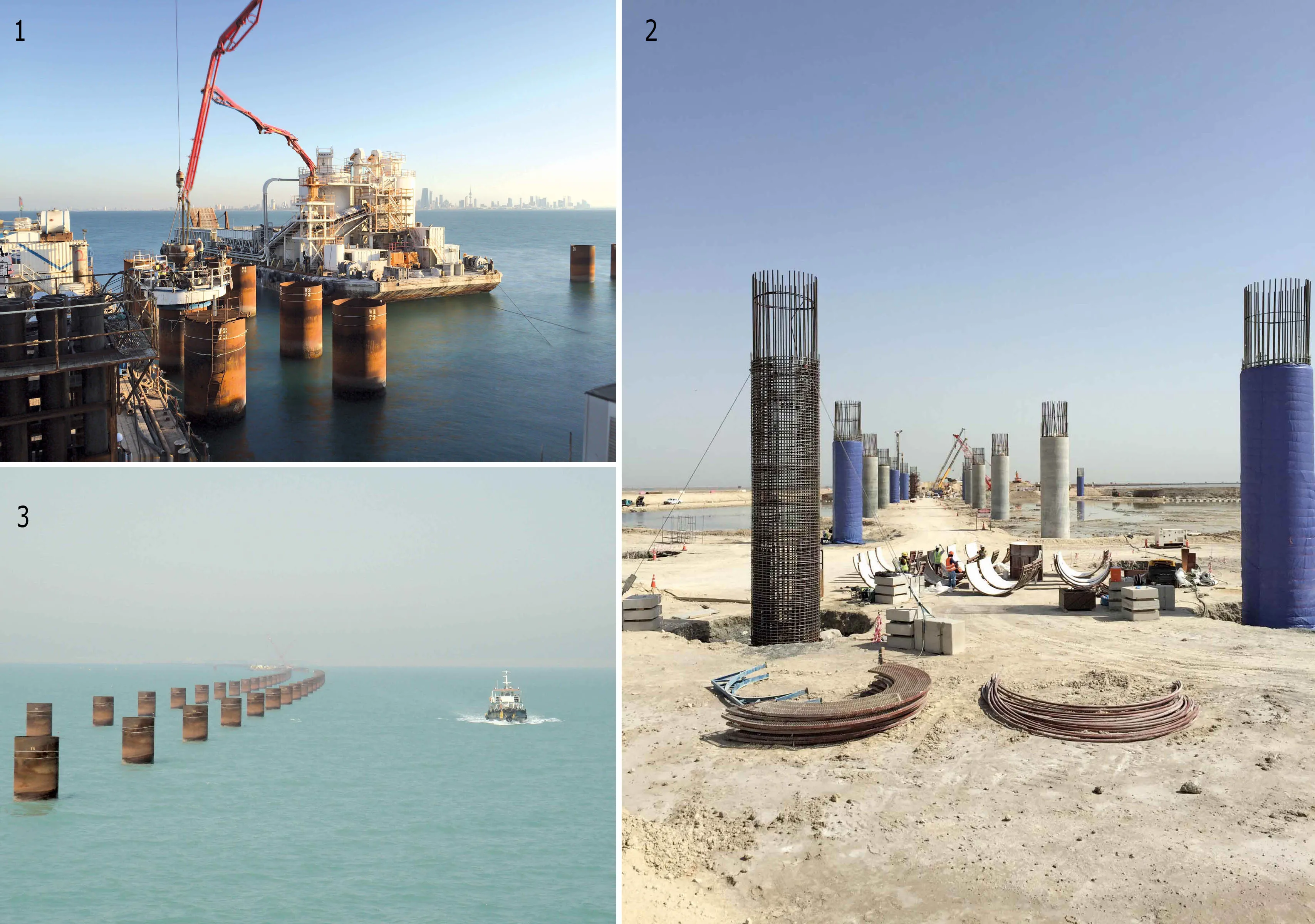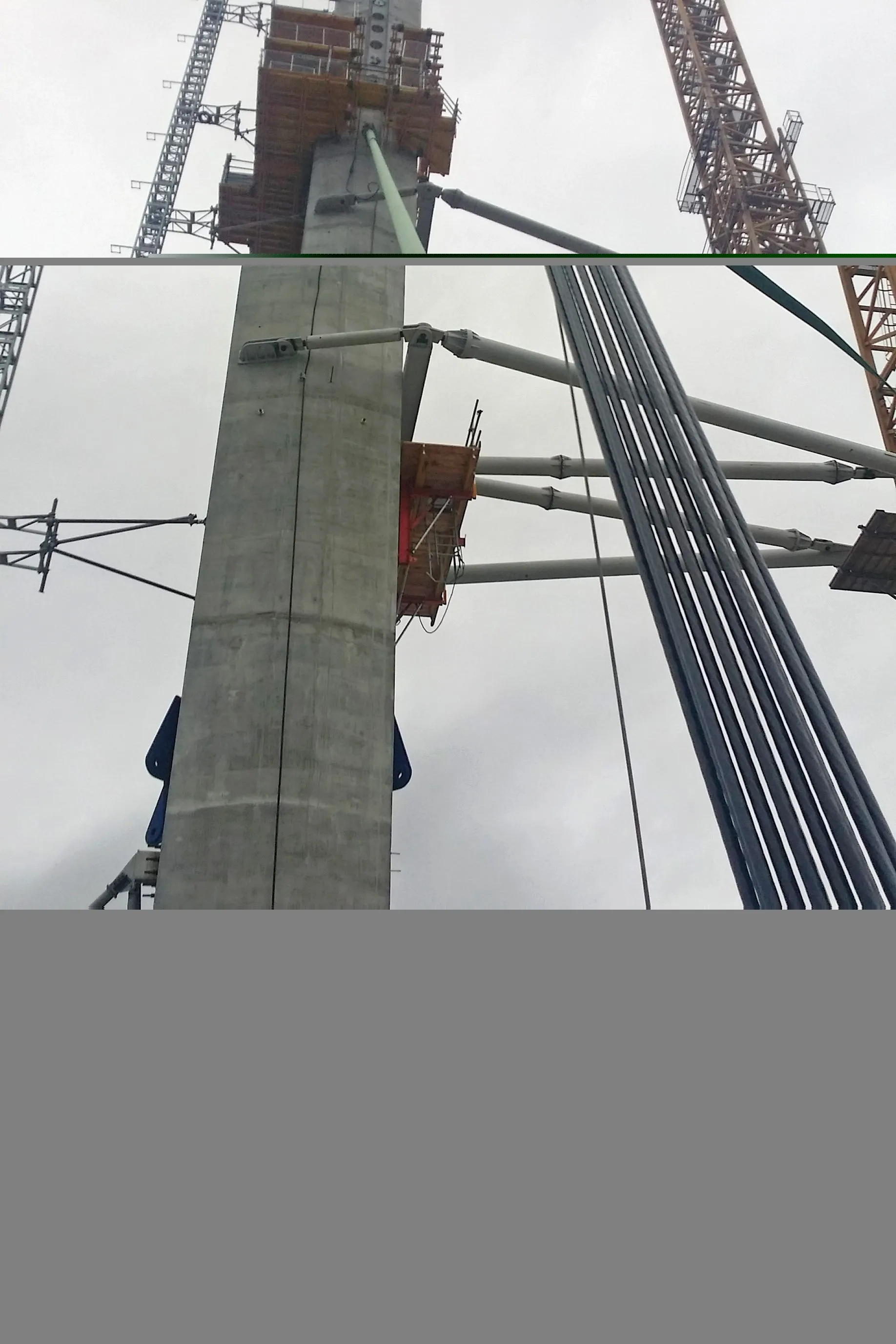
Divided into four phases, the project requires major bridge work to improve traffic flow through Central Florida. In all, 13 existing structures are being widened, 53 new bridges added and 74 bridges replaced. Area 2, currently under construction, runs through Orlando from Highway 50 at the northern edge to the Highway 423/I-4 interchange at its southernmost part.
The engineering team is adding or reconstructing 40 structures in this area and needs to place 22,680tonnes of steel for this phase.
V&M is the key structural steel contractor for the bridge work and now has three
Area 2 comprises of multiple high-level flyover ramps, which makes accessing the site challenging. Rather than working at night to place girders, V&M and the Florida DOT are using 40- to 56-hour road closure times to improve construction efficiency and limit impact on traffic.
The work schedule requires V&M to move from bridge to bridge, and each bridge consists of one to five units. Within each bridge unit, workers must move the cranes three to four times. Once on site, the Terex HC series cranes’ hydraulic counterweight removal system simplifies and reduces plate installation and removal time.
Throughout Area 2, V&M will equip its three HC cranes with boom configurations ranging from 42.7-61m and work at radii where the lift chart offers capacities from 68-90.7tonnes.
For maximum capacity, the cranes are rigged in their full counterweight configurations. Additionally, a luffing jib is kept on site to assist lifting the preassembled girders over structures.
On the complex bridge number 225, V&M paired the smaller HC 230 and 275 cranes in tandem lifts, while its larger HC 285 crawler and an AC 700 all-terrain crane from Hunter Merchant were reserved to support the heavier girder spans. This gave crew members the capacity required to connect the flyover spans between piers while supported at elevation.









